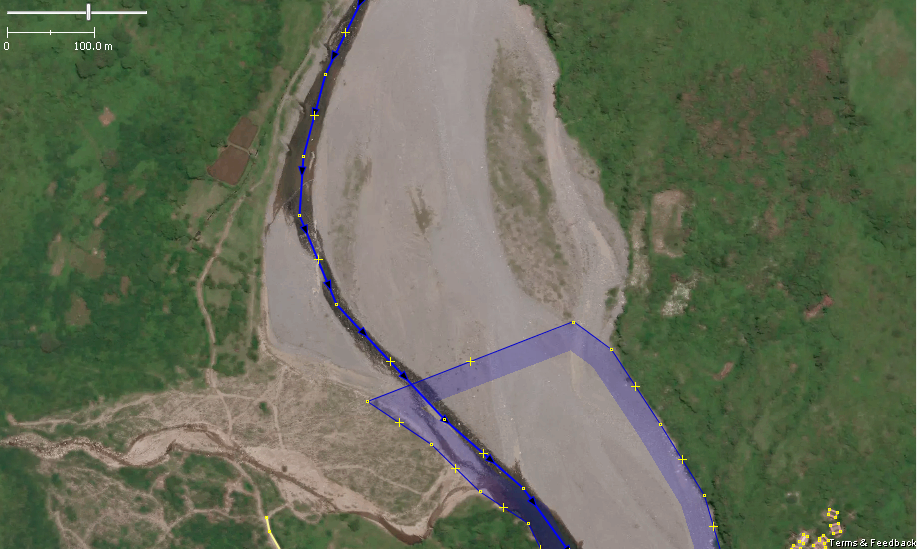There are many rivers which are heavily silted. Should the visible silted areas be drawn separately and tagged as [shingle]s or combined with the entire [riverbank] polygon?
asked 22 Dec '17, 17:35 JAT86 |
3 Answers:
Braided rivers are common in many areas of the world: particularly those where natural river courses have not been altered by people. I don't think waterway=riverbank is the appropriate tag for the following reasons:
For these reasons I have used natural=riverbed which is documented on the wiki. Of course you can then, in addition map areas of shingle and sand ; the width of the normal channel of the river (although beware that these may change rapidly causing aerial photos to be outdated), etc. answered 24 Dec '17, 12:30 SK53 ♦ |
The wiki page for riverbank states the following:
answered 24 Dec '17, 13:36 Tordanik |
AFAIK the current practice, and I do this myself in Alaska where many of the rivers look like your example, is to make the riverbank extend to the maximum size the way it appears in the lower part of the screenshot. I've occasionally tagged rivers with very large dry areas with natural=sand. There are so many unmapped rivers in Alaska that I've used this scheme in part because of the time that would be needed for a finer grained, and perhaps more correct, tagging scenario but you may feel differently about this. I'll be interested to learn what others have to say. Cheers, AlaskaDave answered 24 Dec '17, 00:14 AlaskaDave |

